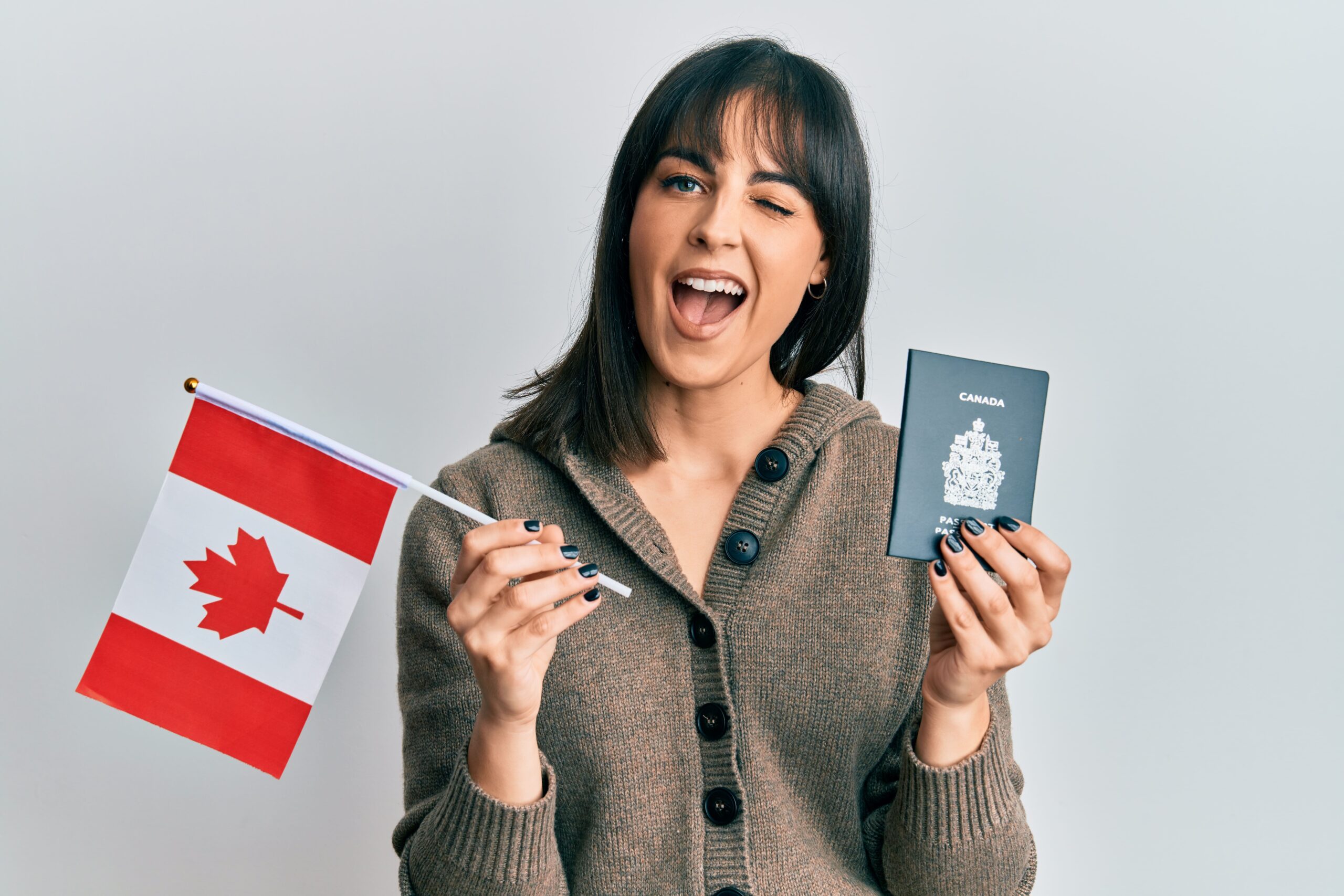Canada is known for its welcoming stance on immigration, and with nearly one in 20 Canadians holding more than one passport, dual citizenship is more common than you might think. However, despite its widespread nature, dual citizenship can still be a bit unclear. Here’s everything you need to know about Canadian dual citizenship, including how to acquire it, your rights and responsibilities, and what happens when one of your countries doesn’t allow dual nationality.
How to Acquire Dual Citizenship in Canada
Canada allows dual citizenship, which means you don’t have to renounce your original nationality to become Canadian. There are several ways to acquire dual citizenship in Canada:
Birthright Citizenship
If you’re born in Canada, you’re automatically a Canadian citizen, even if your parents are from another country. If you are born abroad to Canadian parents, you may also acquire Canadian citizenship by descent, potentially giving you dual citizenship if your parents are from a country that also offers citizenship by descent.
Naturalization
If you’re an immigrant to Canada, you can become a Canadian citizen through naturalization. Canada doesn’t require you to give up your original citizenship when becoming Canadian, so many immigrants retain dual citizenship. Similarly, if a Canadian moves abroad and acquires citizenship in another country, they can hold dual nationality as long as the new country allows it.
Marriage
Some countries, like Canada, offer easier paths to citizenship for those married to a citizen of that country. While marriage alone doesn’t automatically grant citizenship, it may simplify the process in certain countries. A Canadian marrying someone from another country could become eligible for that country’s citizenship, acquiring dual nationality.
Descent or Ancestry
Many countries offer citizenship through ancestry, allowing individuals to claim citizenship if they have a parent or grandparent who was born there. Countries like Italy and Ireland have liberal laws around citizenship by descent, which means many Canadians with family ties to those countries may automatically qualify for dual citizenship.
Rights and Responsibilities of Dual Citizens
Dual citizens enjoy a variety of rights and privileges in both countries where they hold citizenship, including:
- Voting Rights: You can vote in both countries, which gives you a voice in elections and political decisions.
- Social Services: You have access to public services like healthcare and education in both countries.
- Legal Protection: You are protected under the legal systems of both countries.
However, dual citizenship comes with some responsibilities as well. Here are a few key things to keep in mind:
- Traveling: Dual citizens can move freely between both countries. However, they may be required to use their passports from the appropriate country when traveling. For example, if you’re a Canadian and U.S. dual citizen, you’ll need to present your Canadian passport when entering Canada and your U.S. passport when entering the U.S.
- Tax Obligations: Some countries, like the U.S., tax their citizens on worldwide income, even if they live abroad. Canada has tax treaties with many countries to avoid double taxation, but dual citizens may still need to file taxes in both countries.
- Military Service: Some countries require mandatory military service. If one of your countries has this law, you may be obligated to fulfill it.
Countries That Allow Dual Citizenship
Canada is one of the 49 countries that allow dual citizenship. Others include:
- Australia
- Belgium
- France
- Ireland
- Italy
- Mexico
- Portugal
- Spain
- United Kingdom
- United States
However, not all countries share this policy. Some, like India, China, and Japan, don’t allow dual citizenship. If you acquire citizenship in one of these countries, you may be required to renounce your original nationality.
Naturalization Process for Immigrants Retaining Original Citizenship
If you’re an immigrant and want to become a Canadian citizen without losing your original nationality, you’re in luck. Canada allows dual citizenship, which means you don’t have to renounce your original citizenship during the naturalization process. However, some countries require you to renounce your nationality when you acquire a new citizenship.
Countries like the United States, the U.K., and many EU nations permit dual citizenship, so immigrants from these countries can maintain both their original nationality and Canadian citizenship. However, countries like India, Japan, and China prohibit dual citizenship. In these cases, you may need to give up your original nationality if you want to become Canadian.
Restrictions on Dual Citizenship
While Canada permits dual citizenship, some countries don’t. Here are a few restrictions to be aware of:
- Countries That Do Not Allow Dual Citizenship
Countries like India, China, Japan, and Saudi Arabia don’t allow dual citizenship. If a Canadian becomes a naturalized citizen of one of these countries, they may lose their Canadian citizenship automatically, or they may have to renounce it.
- Military Service
Some countries, like South Korea and Israel, require citizens, including dual nationals, to serve in the military. Dual citizens must follow both countries’ military laws, which can sometimes create complications.
- Tax Obligations
In some cases, dual citizens may be required to pay taxes in both countries. For example, the U.S. taxes its citizens on worldwide income, so dual U.S.-Canadian citizens might need to file taxes in both countries.
- Legal Conflicts
Dual citizenship can also create conflicts between the legal systems of both countries, especially when it comes to issues like inheritance, taxes, and military service.
Advantages of Dual Citizenship
Dual citizenship comes with several benefits:
- Travel Freedom: You can travel without needing visas between your two countries, making international travel easier.
- Access to More Rights: Dual citizens can enjoy healthcare, education, and social services in both countries.
- Employment Opportunities: You can work in both countries without needing a work visa or permit.
- Emergency Help: If you’re in a country facing civil unrest or other problems, you have the option of choosing which country’s embassy to seek help from.
Disadvantages of Dual Citizenship
While dual citizenship offers many perks, it also has its downsides:
- Tax Obligations: Dual citizens may need to file taxes in both countries, which can get complicated.
- Military Service: Some countries require mandatory military service, which could be a burden for dual citizens.
- Legal Conflicts: Dual citizens must abide by the laws of both countries, which can sometimes create conflicts, particularly in areas like property ownership, inheritance, or national security.
What Happens if One Country Does Not Allow Dual Citizenship?
If one of your countries doesn’t allow dual citizenship, you may face the following:
- Automatic Loss of Citizenship: Some countries automatically revoke your original citizenship if you acquire a new nationality. For example, Japan or Singapore will strip you of your citizenship if you become Canadian.
- Renunciation Requirement: Some countries may require you to formally renounce your original citizenship as part of the naturalization process. Failing to do so can lead to legal penalties or loss of your new citizenship.
- Limited Rights: If a country doesn’t allow dual citizenship, maintaining both citizenships can lead to legal complications. You may not be allowed to own property or vote in one country, and you might face restrictions on certain jobs or government positions.
Tips for Dual Citizens
If you hold dual citizenship, here are some practical tips:
- Always Carry Both Passports: When traveling, carry both passports to avoid confusion and ensure smooth entry into both countries.
- Understand Your Tax Obligations: Know the tax laws of both countries and how they apply to you. Be aware of treaties that prevent double taxation.
- Be Aware of Military Service Laws: If either of your countries has mandatory military service, make sure you understand the obligations.
Conclusion
Canadian dual citizenship offers many benefits, from easier travel to access to more rights and services. However, it comes with responsibilities, such as managing taxes and legal obligations. Understanding the rules of both countries is crucial to fully benefit from dual citizenship. Be sure to research the specific laws of both countries to avoid complications down the road.






